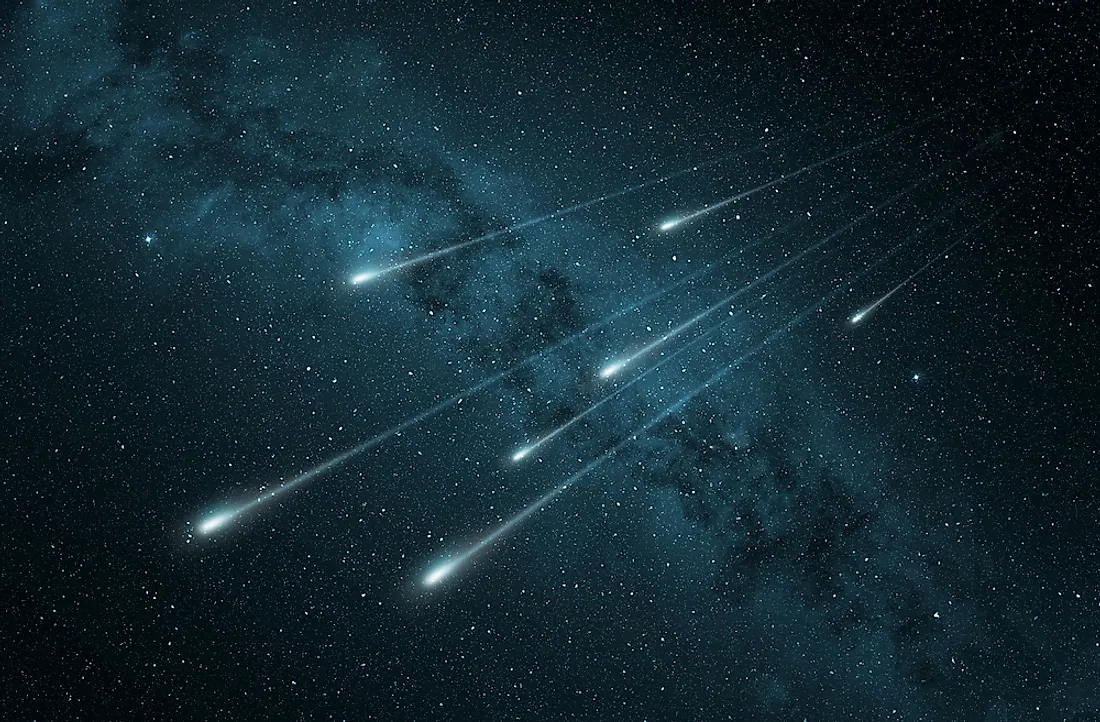What Is A Bolide?

A space rock that has not entered the Earth’s atmosphere is usually referred to as a meteoroid or asteroid, once in the Earth’s atmosphere, the rock traveling at very high velocities encounters friction from the atmosphere resulting in a fireball that is then referred to as a meteor. Meteors that reach the ground are then called meteorites. An extremely bright meteor is called a bolide.
Bolide Definition
The term bolide comes from the Greek word bolis which means “to flash.” The word bolide is used by astronomers when referring to brighter than usual fireballs with the apparent magnitude -14 or brighter. Bolides that reach the apparent magnitude of -17 or brighter are referred to as superbolides. Some of the most well-known superbolides in the recent past include the Chelyabinsk meteor and the Sutter’s Mill meteorite. Geologists, on the other hand, use the term “bolide” while referring to large crater-forming bodies that impact the earth from unknown origins. According to the American Meteor Society, a bolide can be distinguished from a fireball (which has an apparent magnitude of -4) by its bright terminal flash that is accompanied by visible fragmentation.
Chelyabinsk Meteor
The Chelyabinsk meteor is a superbolide that entered Earth’s atmosphere on February 15, 2013, over the skies of Russia. The meteor weighed an estimated 10,000 tons and was traveling at speeds of between 40,000 and 42,900 miles per hour before it exploded 97,000 feet over Chelyabinsk Oblast. The light of the exploding meteor was brighter than the sun which has an estimated apparent magnitude of -26.7 and could be seen even in neighboring republics. The meteor is the largest natural object known to have entered the Earth’s atmosphere since 1908. The blast of the Chelyabinsk meteor led to the release of a hot cloud of gas and dust whose heat was felt by some of the eyewitnesses.
Sutter’s Mill Meteorite
The Sutter’s Mill meteorite come into the atmosphere of our planet Earth on April 22, 2012. The meteorite which was estimated to be the size of a mini-van during entry produced sonic booms as it fell over the skies of Nevada and California. Fragments of the meteorite were found in the Henningsen-Lotus Park near the Sutter’s Mill hence its name. The location is also famously associated with the California Gold Rush. The Sutter’s Mill meteorite which is a carbonaceous chondrite is believed to contain valuable clues on the solar systems composition and formation. The meteorite is estimated to have been traveling at 28.6 ± 0.7 km/s per second and reached peak brightness at 35 miles above the ground before breaking up at about 30 miles above ground.
Bolide Composition and Brightness
The composition of a bolide may range from metallic and stony asteroids to icy comets made of ammonia and methane. The burning up of the meteor typically causes the brightness of the bolide due to the friction in the atmosphere. Larger and faster space debris thus carry vast amounts of energy since the Kinect energy of the object is proportional to the mass multiplied by the squared velocity.











